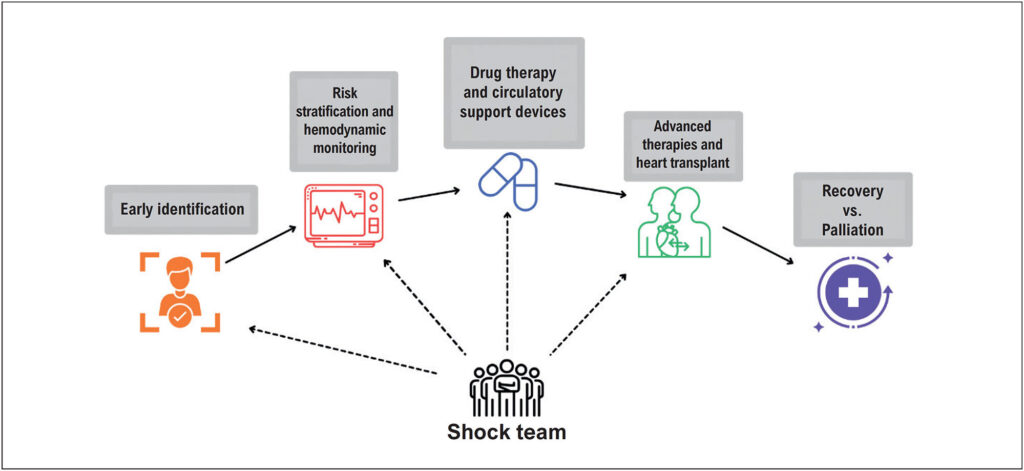ABC Heart Fail Cardiomyop 2024; 4(1): e20240033
Non-Ischemic Cardiogenic Shock: How to Improve Outcomes – From Early Recognition to Distinctive Management
Introduction
Cardiogenic shock is a clinical condition with an increasing incidence that presents with tissue hypoperfusion, leading to multiorgan dysfunction with a high mortality rate. Non-ischemic cardiogenic shock has been recognized as an important cause of shock in emergency rooms, with an incidence exceeding that of shock related to acute myocardial infarction (AMI) in some populations. Recent data from the Cardiogenic Shock Working Group (CSWG), an international multicenter registry, reveals that the mortality rate for this condition varies from 22 to 32%, depending on the type of institution.
Unlike cardiogenic shock of ischemic origin, in which an index event marks the beginning of myocardial injury, potentially leading to the state of shock, in cardiogenic shock of non-ischemic origin the presentation represents the continuum of advanced heart failure. For the purposes of this article, we will be focusing exclusively on shock related to advanced heart failure, since it is the most prevalent type and often presents with a wide range of symptoms, which can delay diagnosis and contribute to poorer outcomes. The following topics will be covered: definitions pertinent to diagnosing cardiogenic shock and its various clinical presentations; initial systematic evaluation of these patients, including recent updates on the use of pulmonary artery catheters and individualized risk stratification for morbidity and mortality; and management strategies for non-ischemic cardiogenic shock, including pharmacological treatments, mechanical devices, and the role of “Shock Teams” in coordinated care.
[…]
Keywords: Cardiogenic Shock; Heart Failure; Intensive Care Unit
521


